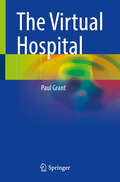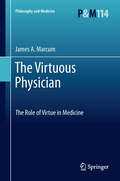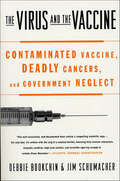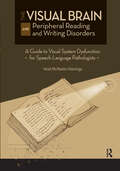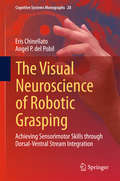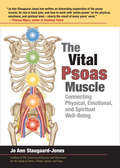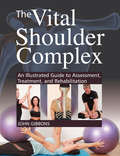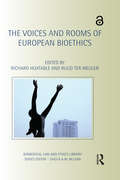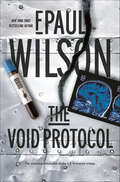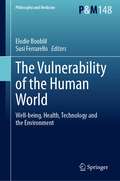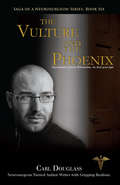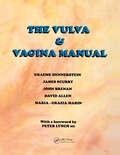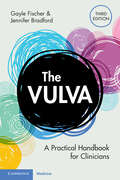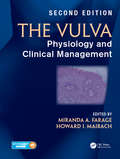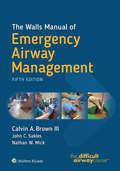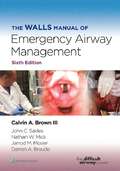- Table View
- List View
The Virtual Hospital
by Paul GrantThis book describes the current picture of healthcare and how medicine can develop in the 21st century to provide traditional hospital services differently with the use of clinical-digital transformation. Technological and social developments are enabling doctors, patients, tech developers, entrepreneurs and policy makers to recognise that care delivery can be achieved in novel and interesting ways far from the classic bricks and mortar approach. There are multiple triggers for change including the ageing population, limitations of existing clinical capacity and the COVID pandemic, accelerating the use of remote technologies, along with patient demands and expectations being higher than ever. With the speed of development of so many new technologies, it is hard to keep track of them, plus there is a need to scrutinize their claims and true potential for significant improvements in care delivery. The increasing global emphasis on the use of ‘virtual wards’, a way of remotely monitoring patients in their own homes and freeing up hospital beds, raises questions about the use of such systems of care and how they may be prone to safety failures and higher costs. The rush to use them needs to be balanced with the right level of evaluation and assurance. The Virtual Hospital explores the many approaches by which traditional medical practice is changing and the potential for new technologies (everything from biohacking to AI) to disrupt the existing paradigm. The goal is to assess and challenge whether the claims for such developments are robust and beneficial, rather than merely praising how shiny and clever the future looks. Consequently, this book is of enormous value to all involved in the provision of care, from physicians, nurses and healthcare planners to data scientists and healthcare leaders in all clinical settings.
The Virtuous Physician
by James A. MarcumAlthough modern medicine enjoys unprecedented success in providing excellent technical care, many patients are dissatisfied with the poor quality of care or the unprofessional manner in which physicians sometimes deliver it. Recently, this patient dissatisfaction has led to quality-of-care and professionalism crises in medicine. In this book, the author proposes a notion of virtuous physician to address these crises. He discusses the nature of the two crises and efforts by the medical profession to resolve them and then he briefly introduces the notion of virtuous physician and outlines its basic features. Further, virtue theory is discussed, along with virtue ethics and virtue epistemology, and specific virtues, especially as they relate to medicine. The author also explores the ontological priority of caring as the metaphysical virtue for grounding the notion of virtuous physician, and two essential ontic virtues--care and competence. In addition to this, he examines the transformation of competence into prudent wisdom and care into personal radical love to forge the compound virtue of prudent love, which is sufficient for defining the virtuous physician. Lastly, two clinical case stories are reconstructed which illustrate the various virtues associated with medical practice, and it is discussed how the notion of virtuous physician addresses the quality-of-care and professionalism crises.
The Virus
by Stanley JohnsonFrom renowned British politician Stanley Johnson, an exciting, intelligent thriller about the rise of a mysterious virus and one man's fight to stop a deadly pandemic, perfect for fans of Michael Crichton and Dan Brown.How do you stop an invisible killer?When a young woman in New York City dies mysteriously after a trip to Europe, top epidemiologist Lowell Kaplan identifies the cause of death as the Marburg Virus—a fatal strain that has surfaced only once before in history.Determined to trace the source of the disease, Kaplan follows a trail of intrigue from the labs of Germany to the jungles of Central Africa. But powerful forces are conspiring against him, determined to keep the secrets of the virus's origin deliberately under wraps. And with a global pandemic on the rise, Kaplan must go to unimaginable lengths to stop a deadly scheme and save mankind.
The Virus and the Vaccine: Contaminated Vaccine, Deadly Cancers, and Government Neglect
by Debbie Bookchin Jim SchumacherJonas Salk's polio vaccine has taken on an almost legendary quality as a medical miracle, for it largely eradicated one of the most feared diseases of the 20th century. But the story of the vaccine has a dark side, one that has never been fully told before...Between 1954 and 1963, close to 98 million Americans received polio vaccinations contaminated with a carcinogenic monkey virus, now known as SV40. A concerted government effort downplayed the incident, and it was generally accepted that although oncogenic to laboratory animals, SV40 was harmless to humans.But now SV40 in showing up in human cancers, and prominent researchers are demanding a serious public health response to this forgotten polio vaccine contaminant. A gripping medical detective story, The Virus and the Vaccine raises major questions about vaccine policy.
The Virus and the Vaccine: The True Story of a Cancer-Causing Monkey Virus, Contaminated Polio Vaccine, and the Millions of Americans Exposed
by Debbie Bookchin Jim SchumacherA comprehensive story of the problems and concerns associated with the polio vaccine
The Virus in the Age of Madness
by Bernard-Henri LevyAs seen on CNN's Fareed Zakaria GPS Forget the world that came before. The author of American Vertigo serves up an incisive look at how COVID-19 reveals the dangerous fault lines of contemporary society. With medical mysteries, rising death tolls, and conspiracy theories beamed minute by minute through the vast web universe, the coronavirus pandemic has irrevocably altered societies around the world. In this sharp essay, world-renowned philosopher Bernard-Henri Lévy interrogates the many meanings and metaphors we have assigned to the pandemic—and what they tell us about ourselves. Drawing on the philosophical tradition from Plato and Aristotle to Lacan and Foucault, Lévy asks uncomfortable questions about reality and mythology: he rejects the idea that the virus is a warning from nature, the inevitable result of global capitalism; he questions the heroic status of doctors, asking us to think critically about the loci of authority and power; he challenges the panicked polarization that dominates online discourse. Lucid, incisive, and always original, Lévy takes a bird&’s-eye view of the most consequential historical event of our time and proposes a way to defend human society from threats to our collective future.
The Vision Zero Handbook: Theory, Technology and Management for a Zero Casualty Policy
by Sven Ove Hansson Karin Edvardsson Björnberg Matts-Åke Belin Claes TingvallThis open access handbook provides a comprehensive treatment of Vision Zero, an innovative policy on public road safety developed in Sweden. Covering all the major topics of the subject, the book starts out with a thorough examination of the philosophy, ideas and principles behind Vision Zero. It looks at conditions for the effectiveness of the policy, principles of safety and responsibility as well as critique on the policy. Next, the handbook focuses on how the Vision Zero ideas have been received and implemented in various legislations and countries worldwide. It takes into account the way Vision Zero is looked at in the context of international organizations such as the WHO, the UN, and the OECD. This allows for a comparison of systems, models and effects. The third part of the handbook discusses the management and leadership aspects, including ISO standards, equity issues, other goals for traffic and transportation, and opportunities for the car industry. Part four delves into tools, technologies and organizational measures that contribute to the implementation of Vision Zero in road traffic. Examples of specific elements discussed are urban and rural road designs, human factor designs, and avoiding drunk and distracted driving. The final part of the handbook offers perspectives on the transfer of Vision Zero policy to other areas, ranging from air traffic to suicide prevention and nuclear energy. Vision Zero is a public road safety policy including both a long-term goal that no one shall be killed or seriously injured as a consequence of accidents in road traffic and a safety principle stating that the design and function of the road transport system shall be adapted to meet the requirements that follow from that goal. It is a new road safety paradigm which has resulted in new types of responsibilities among stakeholders, technological innovations, and new strategies and organizational measures to achieve a safe system. The road safety work based on Vision Zero has shown promising results, and although Sweden has not yet reached a safe system, the number of fatalities and severe injuries has decreased substantially.This is an open access book.
The Visiting Surgeon
by Lucy ClarkSurgeon Susie Monahan has no intention of acting on the high-voltage, instant attraction between her and gorgeous visiting orthopedic professor Jackson Myers. For one, she's been badly hurt before.Two, he's only in Brisbane for one week. And three, he's supposed to be married! But then Susie discovers the truth about Jackson's marriage, and despite her own fears she longs to hold him in her arms and never let him go--if she dares....
The Visual Brain and Peripheral Reading and Writing Disorders: A Guide to Visual System Dysfunction for Speech-Language Pathologists
by Heidi HeeringaThe Visual Brain and Peripheral Reading and Writing Disorders: A Guide to Visual System Dysfunction for Speech-Language Pathologists familiarizes the reader with the complex workings of the human visual system, the motor and sensory components of normal vision as they relate to the recognition of letters and words, and to the acquisition and rehabilitation of reading and writing.This text brings together findings from the neuropsychological, neurooptometric, neurolinguistic, occupational therapy, and speech-language pathology literature on acquired visual system impairment from the past 20+ years, and the ways visual system dysfunction impacts reading, writing, and cognition.Chapters Include: Review of structural elements of the eye, the cortical and subcortical structures of the visual brain, and the motor and sensory components of normal vision The distinct functions of the three primary visual pathways (central, peripheral and retinotectal) and how they relate to reading and writing Review of five formal tests of reading and writing that are designed or may be adapted to assess peripheral reading and writing disorders And much more! A few of the features inside: Figures illustrating the various components of the visual brain that are engaged when we read and write Information on visual system deficits in left hemisphere lesions with and without aphasia Detailed descriptions of peripheral reading disorders and associated error patterns Diagnostic criteria for three different types of neglect (viewer-centered, stimulus-centered, object-centered) Description of treatment materials and methods suited to clients with acquired dyslexia due to visual system dysfunction The Visual Brain and Peripheral Reading and Writing Disorders explains the heterogenous nature of peripheral reading and writing disorders, describes the association between visual motor and sensory dysfunction and the acquired dyslexias, and provides the speech-language pathologist with specific guidelines regarding the assessment and treatment of reading and writing disorders associated with visual system dysfunction.
The Visual Neuroscience of Robotic Grasping
by Eris Chinellato Angel P. PobilThis book presents interdisciplinary research that pursues the mutual enrichment of neuroscience and robotics. Building on experimental work, and on the wealth of literature regarding the two cortical pathways of visual processing - the dorsal and ventral streams - we define and implement, computationally and on a real robot, a functional model of the brain areas involved in vision-based grasping actions. Grasping in robotics is largely an unsolved problem, and we show how the bio-inspired approach is successful in dealing with some fundamental issues of the task. Our robotic system can safely perform grasping actions on different unmodeled objects, denoting especially reliable visual and visuomotor skills. The computational model and the robotic experiments help in validating theories on the mechanisms employed by the brain areas more directly involved in grasping actions. This book offers new insights and research hypotheses regarding such mechanisms, especially for what concerns the interaction between the dorsal and ventral streams. Moreover, it helps in establishing a common research framework for neuroscientists and roboticists regarding research on brain functions.
The Vital Psoas Muscle: Connecting Physical, Emotional, and Spiritual Well-Being
by Jo Ann Staugaard-JonesLocated deep within the anterior hip joint and lower spine, the psoas major (usually just referred to as the psoas) is critical for optimal postural alignment, movement, and overall well being. The psoas is the only muscle in the human organism that connects the upper body to the lower body, and its importance extends to the nerve complex and energy systems. As modern-day populations grow more sedentary, psoas-related lower back and hip pain, and the ailment of "sitting too much," are on the rise. Even the most active of athletes can suffer from psoas imbalance and pain. The Vital Psoas Muscle demonstrates how to keep the muscle in balance through specific exercises designed to strengthen and utilize this amazing muscle, and discusses its vital role in the emotional and spiritual state of the human being. The interconnection between the psoas and the root chakra is explored, along with yoga poses and postures that stimulate the psoas. Eighty full-color illustrations depict anatomical details, and show the key stretching and strengthening exercises in this practical and comprehensive treatment of the most important skeletal muscle in the human body.
The Vital Shoulder Complex: An Illustrated Guide to Assessment, Treatment, and Rehabilitation
by John GibbonsA comprehensive guide to understanding the complexities of the shoulder and treating shoulder injury and painThe area of the body we commonly refer to as "the shoulder" is in fact a complex of interconnected systems--bones, tendons, muscle, and joints that together work to move our arms, hands, and fingers. Because the shoulder must trade stability for mobility, it is also one of the weakest joints of the body, which explains why it is one of the most common areas of physical pain; injury located in the shoulder can affect areas throughout the entire body. The Vital Shoulder Complex is designed for anyone interested in understanding, treating, and healing shoulder-related pain. Author and renowned bodyworker John Gibbons explains and illustrates the dynamics of the shoulder complex in ways that are accessible and enlightening. The theory and principles described in this book can assist physical therapists in formulating effective treatment protocols towards quick rehabilitation for their patients. These include: • Differential diagnosis of shoulder pathology • The relationship of the pelvis, the SI joint, and the gluteals to the shoulder complex • Pathologies of the shoulder and cervical spine • Special tests associated with the shoulder complex • Rehabilitation and exercise protocols for the shoulder complex <
The Vitamin E Factor: The miraculous antioxidant for the prevention and treatment of heart disease, cancer, and aging
by Andreas PapasIt is too early to conclude that vitamin E has all the beneficial effects attributed to it, but even if only 25% of current expectations were to be fulfilled, vitamin E would become an important weapon against a range of chronic diseases.The book is not simply scientific and education but also a please to read.
The Voice Of Silence: A Life of Love, Healing and Inspiration
by Oonagh Shanley-ToffoloThe Voice of Silence is by an Irishwoman who has had an extraordinary life. Oonagh Shanley-Toffolo was brought up in 1930s rural Ireland where her father initiated her into the healing arts. At the age of 16, she entered a convent where she trained as a nurse, and was sent to India to look after the elderly (and knew Mother Teresa). Here, she felt it was the young, rather than the old, who needed more help and so she left her order and trained in midwifery. Later, in Paris, she was asked to nurse the Duke of Windsor just before he died - and many years later was introduced to Princess Diana and became her weekly confidante. In between, were bouts of serious illness, studying acupuncture in China - and being photographed by Snowdon. The Voice of Silence is the life story of a very unusual woman who has learned far more than most from all the remarkable things that have happened to her. It is also the author's thoughts on healing, spirituality and love - and how closely the three are intertwined. Full of feeling, poetic vision and insight, this book cannot fail to touch the heart of the reader, and inspire.
The Voices and Rooms of European Bioethics (Biomedical Law and Ethics Library)
by Richard Huxtable Ruud Ter MeulenThis book reflects on the many contributions made in and to European bioethics to date, in various locations, and from various disciplinary perspectives. In so doing, the book advances understanding of the academic and social status of European bioethics as it is being supported and practiced by various disciplines such as philosophy, law, medicine, and the social sciences, applied to a wide range of areas. The European focus offers a valuable counter-balance to an often prominent US understanding of bioethics. The volume is split into four parts. The first contains reflection on bioethics in the past, present and future, and also considers how comparison between countries and disciplines can enrich bioethical discourse. The second looks at bioethics in particular locations and contexts, including: policy, boardrooms and courtrooms; studios and virtual rooms; and society, while the third part explores the translation of theories and concepts of bioethics into the clinical setting. The fourth and final section focuses on academic expressions of bioethics, as it is theorised in various disciplines and also as it is taught, whether in classrooms or at the patient’s bedside. The book features unique contributions from a range of experts including: Alastair V Campbell; Ruth Chadwick; Angus Dawson; Raymond G. De Vries; Suzanne Ost; Renzo Pegoraro; Rouven Porz; Paul Schotsmans; Jochen Vollmann; Guy Widdershoven and Hub Zwart. Chapter 10 of this book ''You Don't Need Proof When You've Got Instinct!': Gut Feelings and Some Limits to Parental Authority' by Giles Birchley is available under an open access CC BY NC ND license and can be viewed at: http://www.tandfebooks.com/userimages/ContentEditor/1438250845242/9780415737197_chapter10.pdf .
The Void Protocol: Panacea, The God Gene, The Void Protocol (The ICE Sequence #3)
by F. Paul WilsonIn The Void Protocol, New York Times bestselling author F. Paul Wilson concludes his medical thriller trilogy featuring Rick Hayden and Laura Fanning as they confront the entities responsible for the supernatural events of Panacea and The God Gene.Something sits in a bunker lab buried fifty feet below the grounds of Lakehurst Naval Air Station.The product of the Lange-Tür technology confiscated from the Germans after World War II occupies a chamber of steel-reinforced ballistic glass. Despite experimentation for nearly three-quarters of a century, no one knows what it is, but illegal human research reveals what it can do. Humans with special abilities have been secretly collected—abilities that can only have come from whatever occupies the underground bunker in Lakehurst.And so it sits, sequestered on the edge of the New Jersey Pine Barrens, slowly changing the world.F. Paul Wilson is the winner of the Career Achievement in Thriller Fiction in the 2017 RT Reviewers' Choice Best Book AwardsThe ICE Sequence#1 Panacea#2 The God Gene#3 The Void ProtocolAt the Publisher's request, this title is being sold without Digital Rights Management Software (DRM) applied.
The Vulnerability of the Human World: Well-being, Health, Technology and the Environment (Philosophy and Medicine #148)
by Susi Ferrarello Elodie BoublilThis book contains the most recent papers problematizing the notions of health, vulnerability, and well-being for individuals and their environment. Organized in 5 sections the book takes into consideration the critical and phenomenological history of well-being and health, their technological manipulation, how these notions connect with the body and the specific vulnerability of the human being, and what responsible direction we can take to improve people's relation to themselves, to other living beings and their environment. In order to address the issue of the vulnerability of the human world and how to respond to its specific challenges, the contributions in this book discuss the topic from a broad range of perspectives, including anthropological, psychological, sociological, philosophical, and environmental.
The Vulture and the Phoenix: Neurosurgeon, Garven Wilsonhulme, the final great fight
by Carl DouglassArthur Koestler, the notable twentieth century playwright said, Nothing is more sad than the death of an illusion." Carl Douglass, neurosurgeon turned author, writes with gripping realism about the point in Garven Wilsonhulme, M.D., F.A.C.S's life when he turns the hopes and aspirations of his family, friends, colleagues, and opponents into illusions. In so doing, he realizes that he has become both The Vulture and The Phoenix in his own life. He scrambles to the heights of fame, prestige, riches, and cruelty. There, he meets a wall of opposition and begins the final great fight of his complicated life and career. What he does will surprise and amaze you. This is the finale of the successful Saga of a Neurosurgeon series."
The Vulva
by Gayle Fischer Jennifer BradfordThis practical handbook reviews the important, but complex, area of vulval disease and will help busy clinicians help their patients. The authors have a fresh and evidence-based approach to dealing with everything from common to rare vulval conditions. Their take on vulvodynia and dyspareunia represents an important breakthrough in the understanding of vulval pain. The first edition of this book appeared in 2010, at a time when there was very little published evidence on vulval disease. The entire text has been updated in line with modern practice. A reading list and references are included at the end of each chapter. There is further information on management, particularly in the field of long-term treatment of lichen sclerosus and on newly described conditions. The text is designed for gynaecologists and dermatologists but will also be readily understandable to primary care and family practice physicians, nurse practitioners and others working in women's health.
The Vulva and Vaginal Manual
by David Allen John Brennan Graeme Dennerstein James Scurry Maria-Grazia MarinThis is a new book on the integrated management of vulvovaginal disease. The authors come from a variety of backgrounds - gynaecology, dermatology, pathology and psychology - and describe a multidisciplinary approach to these conditions. The book has the most complete classification of vulvovaginal disease published, based on the etiology of 275 conditions; coverage includes benign, malignant, and functional (including psychosexual) diseases. Each disease has a descriptive summary, pathological features, and treatment guidelines. The book is illustrated in full color throughout.
The Vulva: A Practical Handbook for Clinicians
by Gayle Fischer Jennifer BradfordConditions of the vulva are very common but often taboo, and can badly affect people's sex life, comfort and self-confidence. Despite this, clinicians receive little training in these conditions. This comprehensive yet handy third edition has been fully updated with research giving new insights into vulval diseases, vulvo-vaginal pain and vaginitis. Full-colour clinical photographs and illustrations demonstrate the clinical appearance of a wide spectrum of conditions. Chapters are organised by clinical presentation for ease of reference and information is presented practically, covering misconceptions and common patient questions. Co-written by a dermatologist and a gynaecologist - both specializing in vulval conditions - the handbook provides a unique visual and written guide to the diagnosis, treatment and management of both acute and chronic vulval presentations and explores the latest opinions on causation and classification of neoplasia in the vulva.
The Vulva: Physiology and Clinical Management, Second Edition
by Miranda A. Farage and Howard I. MaibachA unique compilation of expertise on anatomy, physiology, clinical issues, and current research, this textbook analyzes the range of presentation with age, ethnicity, symptoms, disorders, diagnoses, and toxicity. The second edition of this essential resource for anyone taking care of female patients has been doubled in scope to include additional chapters. All physicians, whether dermatologists or gynaecologists, as well as those researching the scientific evidence and symptoms, will benefit from the experience of the expert contributors and editors gathered here.
The Walls Manual of Emergency Airway Management
by John C. Sakles Calvin A. Brown Nathan W. MickThe Walls Manual of Emergency Airway Management is the world’s most trusted reference on emergency airway management, and is the foundation text in the nationally recognized The Difficult Airway Course: Emergency™ and The Difficult Airway Course: EMS™. Its practical, hands-on approach provides all the concrete guidance you need to effectively respond to any airway emergency, whether inside the hospital, emergency department, urgent care setting, or anywhere else where airway emergencies may occur. Apply the latest evidence-based approaches thanks to state-of-the-art coverage that includes new chapters on “The Difficult Airway Cart” and “Human Factors in Emergency Airway Management,” expanded coverage on delayed sequence intubation (DSI), and comprehensive updates throughout. Efficiently overcome any challenge in airway management with the aid of step-by-step instructions, mnemonics, easy-to-follow algorithms, and rich illustrations. Glean expert insights from a brand-new editorial team led by Calvin Brown III, MD, who is Dr. Walls’ colleague and protégé, and consisting of the same experts who teach The Difficult Airway Course: Emergency™ and The Difficult Airway Course: Anesthesia™.
The Walls Manual of Emergency Airway Management
by John C. Sakles Calvin A. Brown Nathan W. Mick Jarrod M. Mosier Darren A. BraudeLong recognized as the gold standard emergency airway management textbook, The Walls Manual of Emergency Airway Management, Sixth Edition, remains the most trusted reference on this challenging topic. This practical reference, edited by Drs. Calvin A. Brown III, John C. Sakles, Nathan W. Mick, Jarrod M. Mosier, and Darren A. Braude, is the foundation text for these nationally recognized programs: The Difficult Airway Course: Emergency™, The Difficult Airway Course: Critical Care™, The Difficult Airway Course: EMS™, and The Difficult Airway Course: Residency Edition™. Its hands-on approach provides the concrete guidance you need to effectively respond wherever adult or pediatric airway emergencies may occur, including in and out of hospital settings, emergency departments, and urgent care centers.
The War Against Nonhuman Animals: A Non-Speciesist Understanding of Gendered Reproductive Violence
by Stacy BanwellWe are currently engaged in an existential species war against nonhuman animals. This book argues that, during this war, nonhuman animals should be granted legal personhood and treated as ‘protected persons’ rather than the property of ‘protected persons.’ The main argument is that War Crimes and Crimes against Humanity – rape, forced pregnancy and other acts of sexual violence – are being committed within the meat, egg and dairy industries. Avoiding ‘dreaded comparisons’, the book explores shared sources of oppression between human and nonhuman animals who are subject to the expressions and consequences of reproductive violence. It asks: what drives and facilitates the war against nonhuman animals? And what are the global consequences of this war? Throughout, it demonstrates how racism, sexism, and speciesism informs both intrahuman violence and the violence(s) of the animal-industrial complex. Ultimately the book asks us to reconsider what it means to be human.
